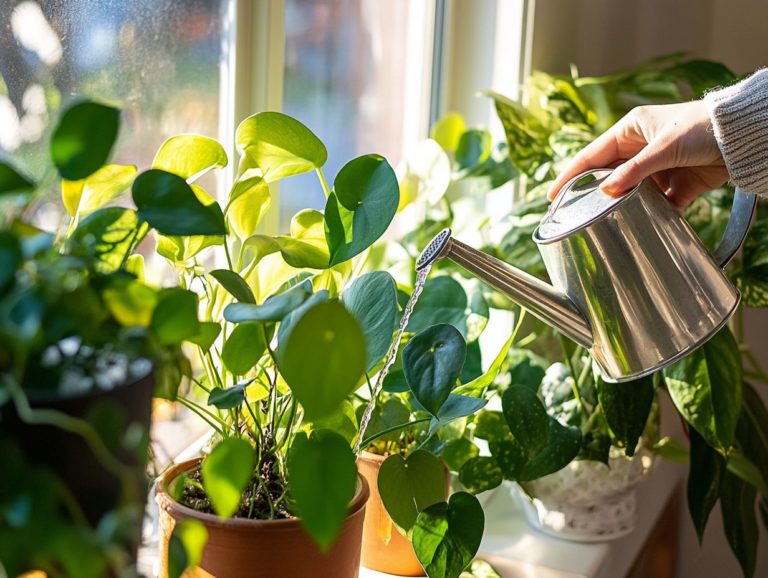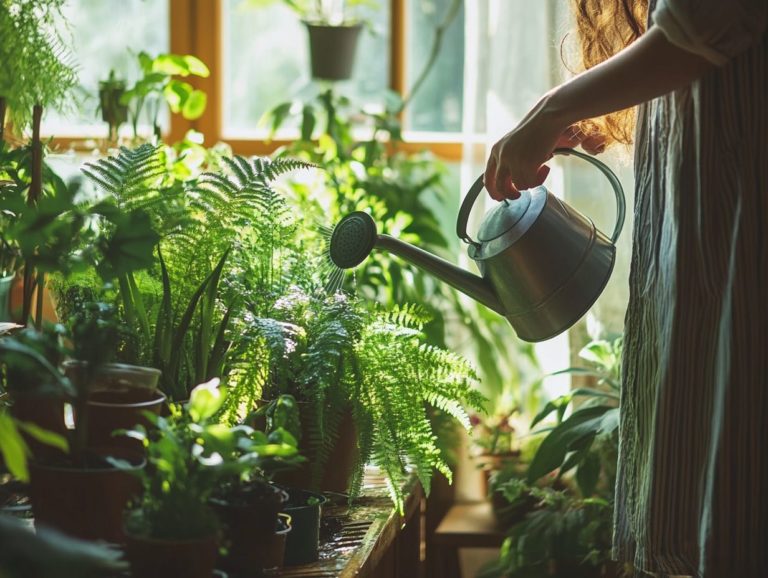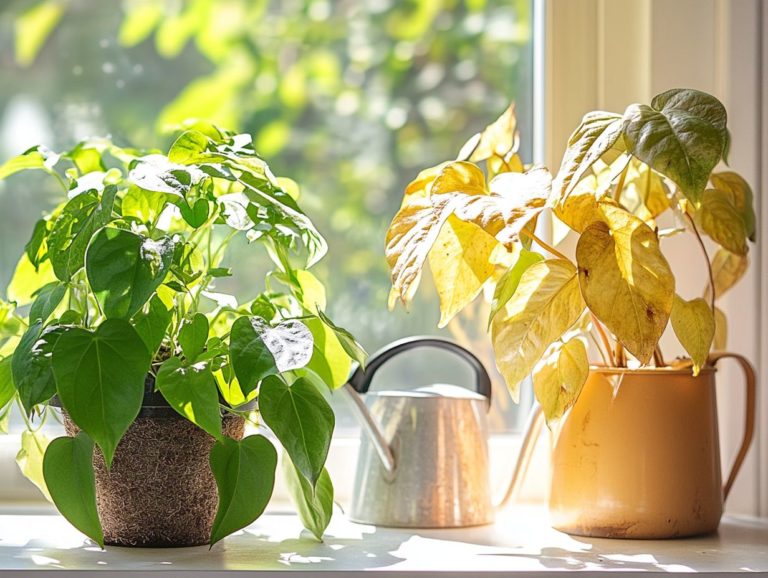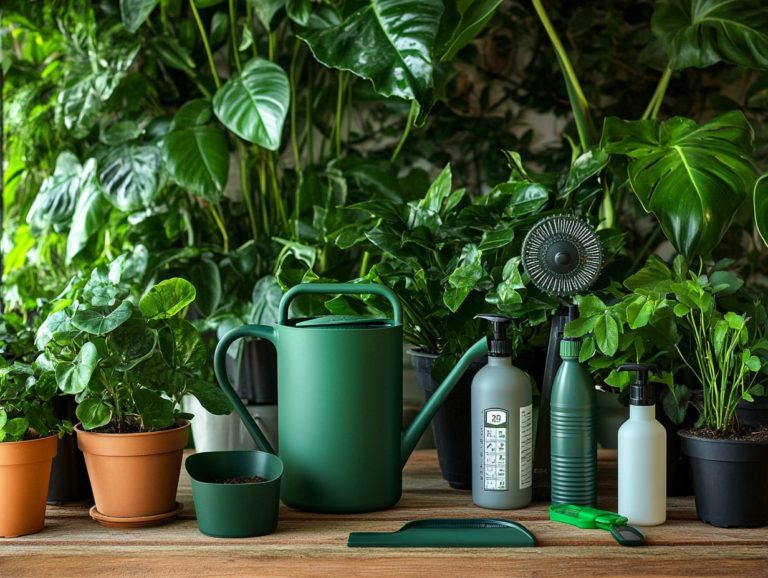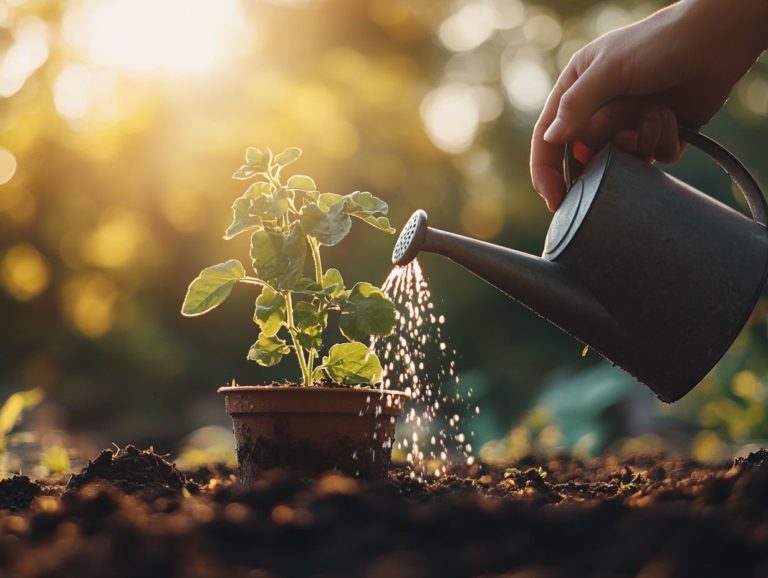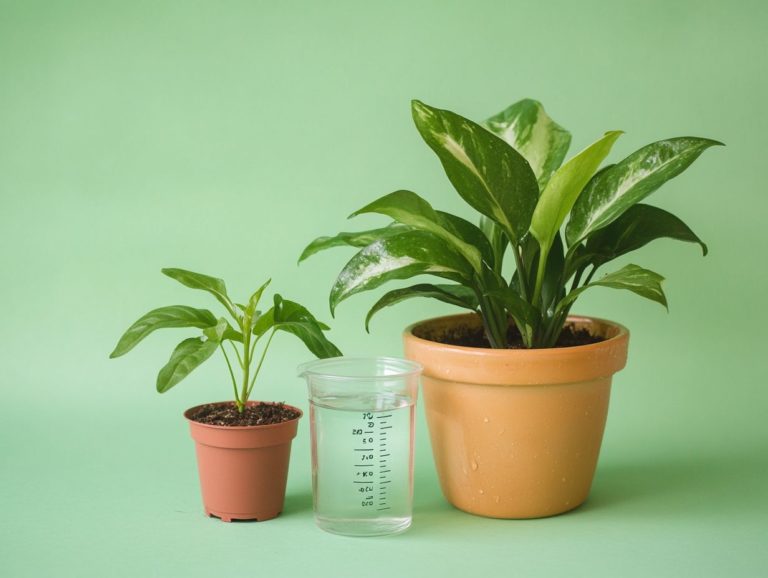How to Recognize Watering Needs in Different Species
Understanding the art of watering your plants can truly transform their health and vitality.
This article delves into the myriad factors that shape watering needs, examining everything from the distinct requirements of popular houseplants to the specific care instructions for sought-after species.
It also addresses how varying soil types and climates impact garden plants, offering customized guidelines for different tree species.
Whether you re a seasoned gardener or just beginning your green journey, you ll discover valuable insights to help your plants flourish.
Contents
Key Takeaways:
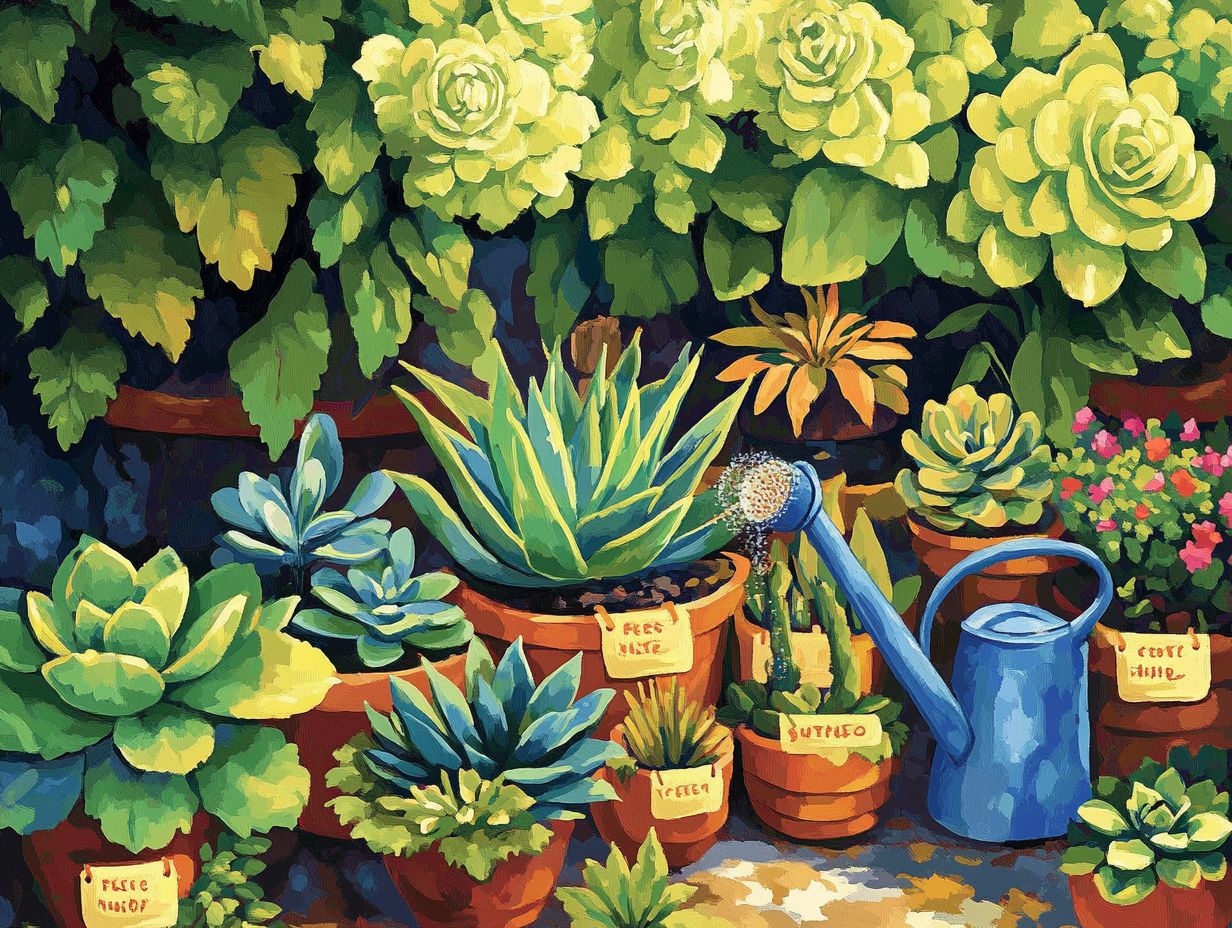
- Pay attention to factors such as climate, soil type, and plant species when determining watering needs.
- Popular houseplants like succulents and ferns have different watering requirements; do your research and provide specific care instructions.
- Garden plants, such as vegetables and flowers, may need more frequent watering in hot climates or in sandy soil.
Understanding Watering Needs in Plants
Grasping the watering needs of your plants is crucial for their health and longevity.
Different species require specific moisture levels in their soil, influenced by various factors such as temperature, humidity, and the potting medium you choose.
By regularly assessing your plants needs and establishing a consistent watering routine, you can cultivate flourishing indoor and garden plants that thrive through every season.
Factors Affecting Water Requirements
Several key factors affect the water requirements for your plants, including soil moisture, temperature, and humidity.
These elements dictate how often and how much water your plants need. By understanding these factors, you can tailor your watering routine to meet the specific requirements of different species, ensuring their healthy growth and stability.
For example, the moisture levels in your soil can significantly affect a plant’s ability to absorb nutrients, making it essential to check this regularly. Simple methods like the finger test where you insert your finger into the soil to gauge its dampness or using moisture sensors can provide accurate readings, helping you refine your watering schedule.
Fluctuations in temperature and humidity levels should guide your watering techniques. During hotter weeks, your plants might need a bit more hydration to counteract evaporation, while cooler, more humid conditions may require less water. By adapting your approach based on these factors, you ll promote the optimal health of your green companions.
Recognizing Watering Needs in Common Houseplants
Recognizing the distinct watering needs of your houseplants is essential for their health and vitality.
Each species demands specific care tailored to its environmental requirements, such as light exposure, moisture levels, and humidity.
Whether you re nurturing Cacti or Prayer Plants, understanding how to provide the optimal amount of water will significantly enhance the thriving potential of your indoor garden.
Specific Care Instructions for Popular Species
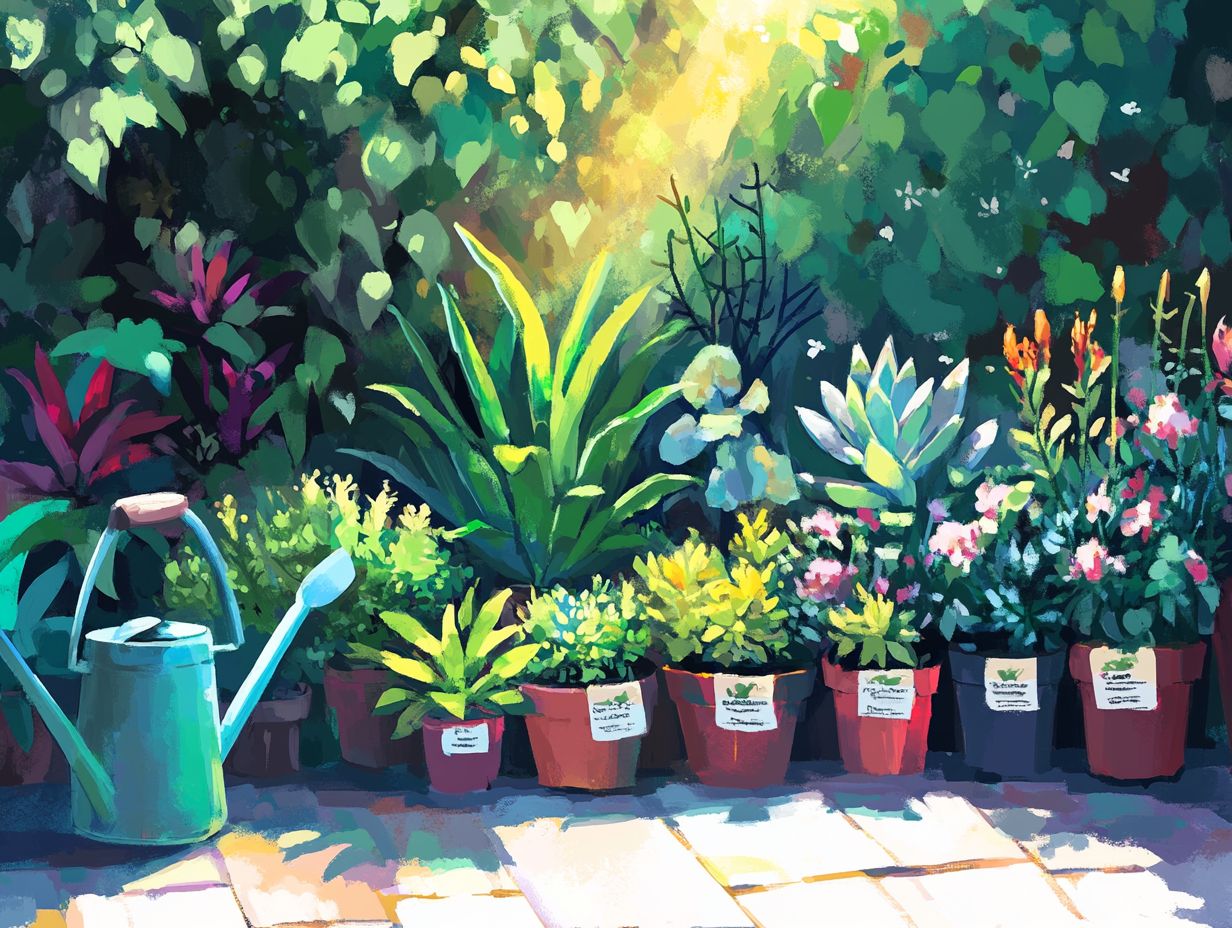
Each plant species comes with its own unique watering requirements. For instance, cacti and succulents thrive in drier conditions and don t need as much water, while moisture-loving plants like Boston ferns and prayer plants crave consistent hydration for optimal growth.
Understanding these specific care instructions is crucial for nurturing vibrant plants in your home. As an indoor garden enthusiast, it s essential to familiarize yourself with the preferences of each species to create the ideal environment.
Overwatering can lead to root rot and other health issues, whereas insufficient hydration may stunt growth and cause leaves to brown.
To keep your plants happy, ensure that your containers have drainage holes to prevent excess water from accumulating. Regularly monitoring soil moisture allows you to adjust your watering schedule based on factors like humidity, the season, and the size of your plants.
Check the top inch of soil frequently; if it feels dry, it s time to give those plants a drink. Don t wait for them to show signs of distress!
Identifying Watering Needs in Garden Plants
Identifying the watering needs of your garden plants requires a keen understanding of how different soil types and climates affect water requirements.
Consider how these elements change with the seasons or during periods of drought. By customizing your watering schedule to account for these factors, you can cultivate lush, healthy plants that enhance the vibrancy of your landscape.
Adapting to Different Soil Types and Climates
Adapting to various soil types and climatic conditions in your garden is crucial for effective watering practices. Different soils retain moisture in unique ways, which can significantly influence the watering needs of your diverse plant types.
Implementing robust water conservation techniques elevates the sustainability of your gardening efforts.
To accurately assess soil types and their moisture retention capabilities, consider conducting a simple jar test. Mix soil samples with water and allow them to settle; this will reveal distinct layers of sand, silt, and clay, providing valuable insights into your garden s needs.
Understanding your soil will quickly improve your watering schedule and keep your plants thriving! This knowledge will also inform necessary adjustments based on local climate factors, such as temperature and humidity.
For instance, using drip irrigation systems in sandy soils can be a highly efficient approach, reducing water waste while ensuring your plants enjoy adequate hydration.
Grouping plants with similar moisture needs can optimize water use, minimizing the risk of over-watering and maximizing your valuable resources.
Watering Guidelines for Different Types of Trees
Watering guidelines for different types of trees are crucial for maintaining their health, as each species has distinct needs shaped by their growth habits and environmental conditions.
By understanding these specific requirements, you can refine your watering practices, particularly during drought periods when watering techniques for different indoor species are of utmost importance.
Tree Species and Their Unique Needs

Different tree species demand personalized care and watering techniques to truly thrive. Native trees are often well-suited to local conditions, while exotic species may require more specialized attention to their watering needs.
Understanding the variations in water consumption can significantly impact their growth patterns. Take oak or maple, for example; these species prefer consistent moisture but can withstand short dry spells.
On the other hand, Mediterranean types, like the olive tree, may flourish with less frequent but deeper watering.
To effectively monitor soil moisture, consider using tools like a moisture meter or performing a finger test to guide your adjustments. Mulching around the base of your trees can help retain soil moisture and regulate temperature, ensuring each tree receives the precise amount of water it needs for optimal health and robust growth.
Watch this video to learn more about recognizing watering needs in plants.
Frequently Asked Questions
-
What are the signs that a plant needs watering?
Some common signs include wilting leaves, dry soil, and drooping stems.
-
How can I tell if a succulent needs more water?
Succulents typically have thick, fleshy leaves that store water. If the leaves appear shriveled or wrinkled, it’s a sign that your succulent needs more water.
-
Why is it important to recognize watering needs in different species?
Different plant species have varying watering needs, so understanding these differences helps you properly care for your plants and support their growth.
-
Can over-watering be harmful to plants?
Yes, over-watering can be just as damaging as under-watering. It can cause root rot and other issues that may lead to the death of the plant.
What are some ways to test the soil moisture level?
You can test soil moisture in several ways. Stick your finger into the soil to check for dampness, use a moisture meter (a tool that measures how wet the soil is), or look at the soil’s color.
Should I water all plants the same way?
No! Different plants need different watering methods. Some prefer being watered from below, while others like it from above.
Research the specific needs of each plant you own to keep them thriving!


